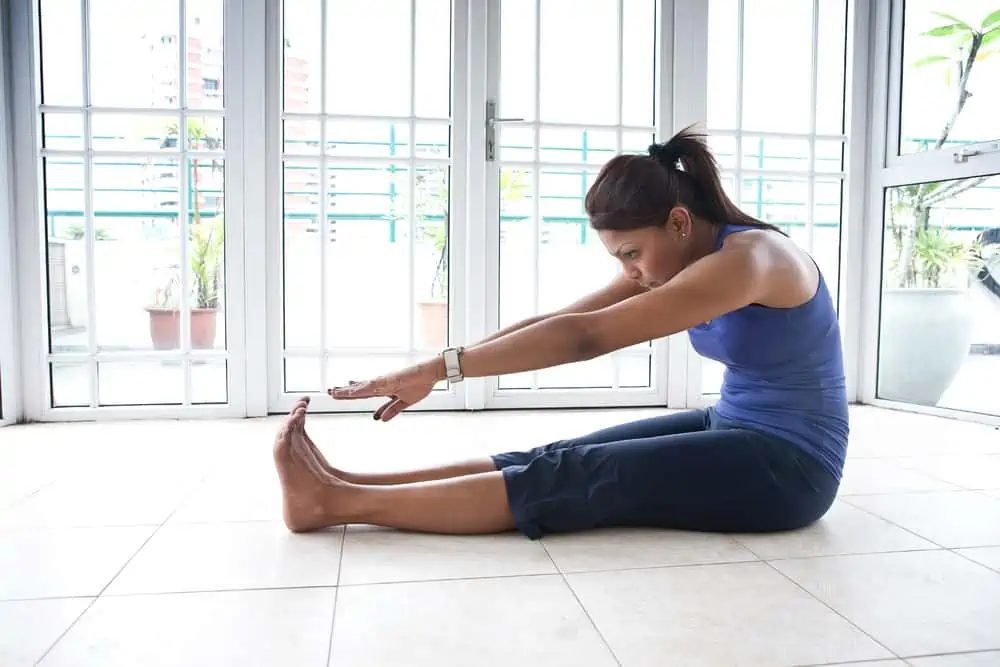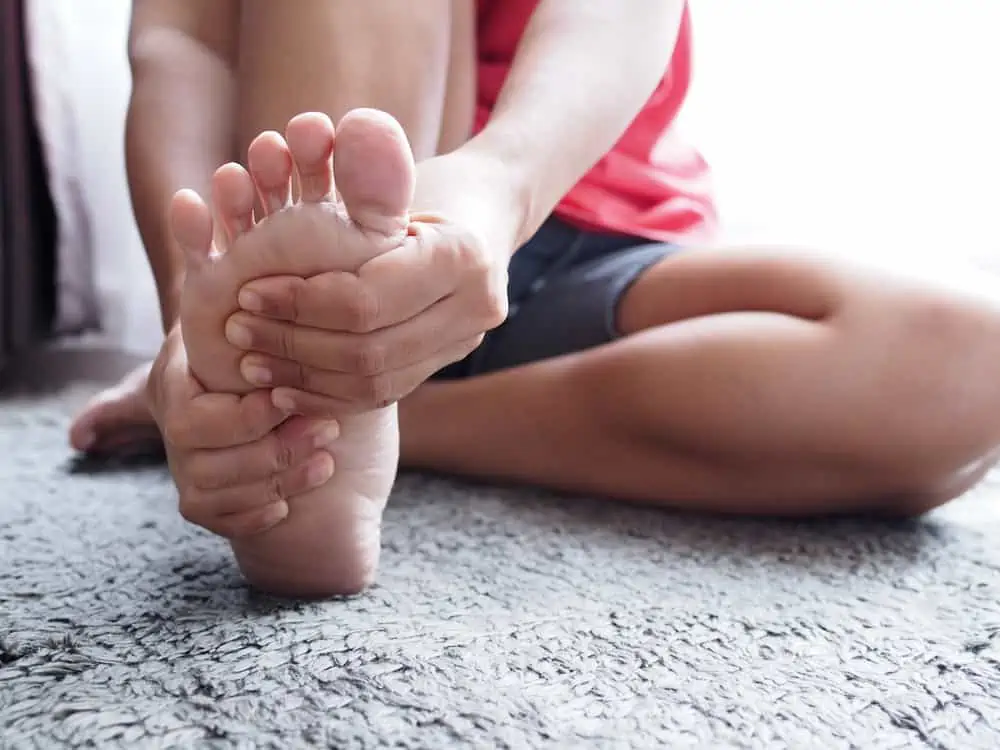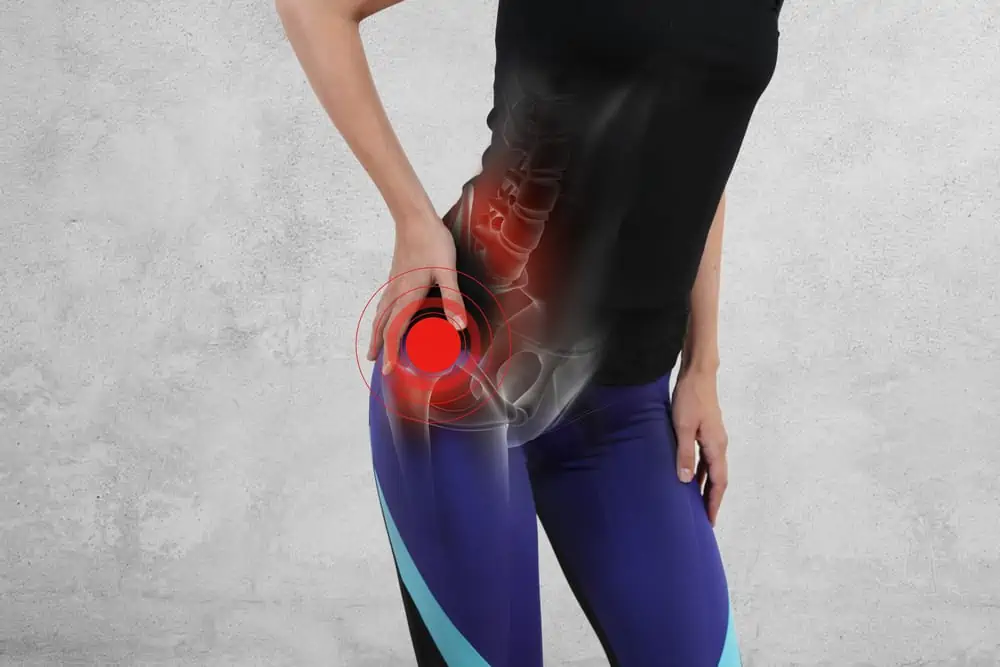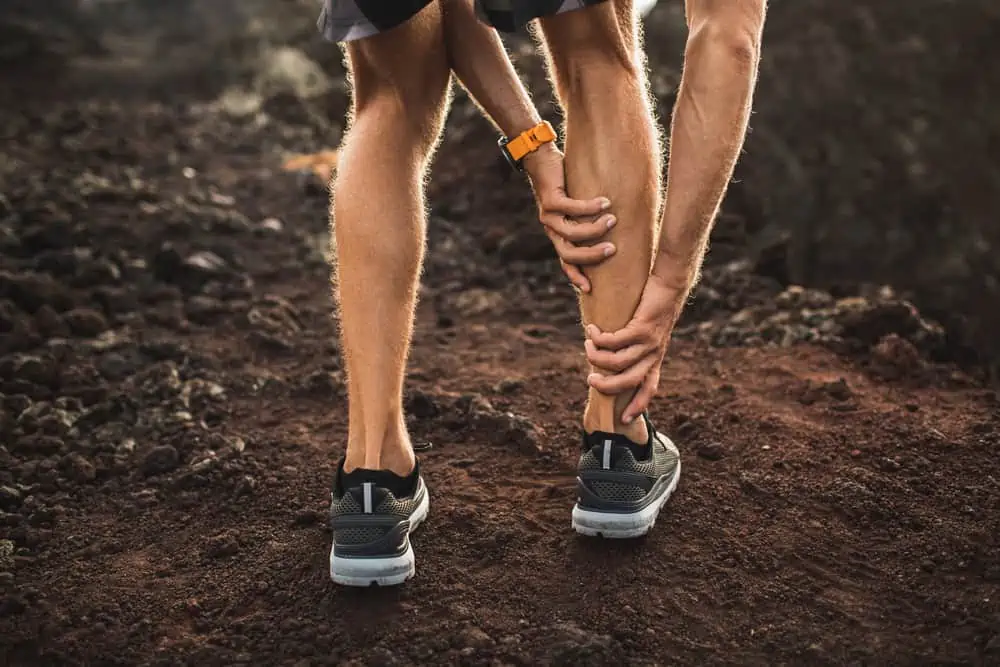This post may contain affiliate links. If you click through a link and make a purchase, I may receive a commission at no additional cost to you. As an Amazon Associate, I earn from qualifying purchases. Read the full disclosure here.
Do you feel like your hamstrings always feel tight no matter how much you stretch?
Then this article is for you.
Tight hamstrings are a common concern, but the answer isn’t more stretching. Keep reading to learn what causes hamstring tightness and actionable solutions for chronically tight hamstrings.
Disclaimer: This content is for educational purposes and is not medical advice. Read the full disclaimer.
Hamstring anatomy
First, let’s take a minute to look at the anatomy of the hamstrings and what they do for us daily.
The hamstrings are a large muscle group located at the back of the thigh made up of three muscles; biceps femoris, semimembranosus, and semitendinosus.
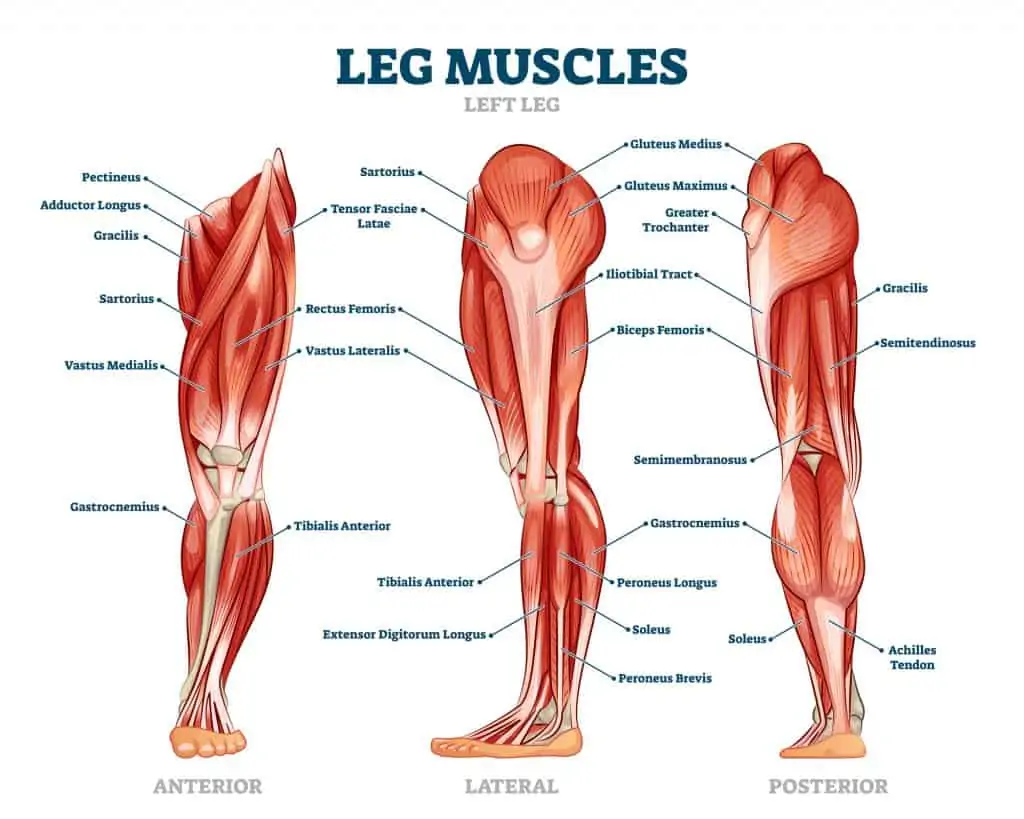
The hamstrings take up a lot of real estate on your legs. The biceps femoris is on the lateral (outer) side, and the semimembranosus/semitendinosus are on the medial side (inside). All three muscles originate at the pelvis, attaching to the sit bones (ischial tuberosity).
The hamstrings cross the knee joint, making the primary function to flex (bend) the knee and assist with extending the hip. (The glute max is the primary hip extensor.)
Because the hamstrings cross two joints, the position of your pelvis and knee can affect your perceived hamstring flexibility. This is why you can feel a more intense stretch when you hinge at the hips vs. simply tucking the pelvis and rounding the back.
During walking or running, the hamstrings control the knee’s extension eccentrically as you propel forward to take the next step. They also help to stabilize the knee during standing and balance activities and help control the pelvis with forward bending.
Another structure that runs in the same region as the hamstrings is the sciatic nerve. Sciatic tension is sometimes confused with hamstring tightness.
Read more about sciatica (plus what to avoid) in this article.
Why are my hamstrings so tight?
Creating the right approach when tackling tight muscles is essential. If you’re still feeling tight despite constant stretching, it’s time to look deeper.
It’s important to understand that “tight” is a perception, and multiple things can cause a perception of muscle tightness, even if they’re not actually tight.
Below are some of the different reasons why your hamstrings might feel tight.
- Inactivity, being sedentary
- Muscle weakness (hamstrings, glutes)
- Overstretching or improper stretching techniques
- Poor movement patterns
- Overtraining
- Playing certain sports, especially those that require running
- Recent hamstring injury
Flexibility is mainly determined by genetics and the nervous system. Have you ever noticed that you might feel tighter when stressed?
Interestingly, it’s theorized that improved flexibility results from a possible neurologic phenomenon and not a true increase in muscle length. So, essentially, we’re able to move further before feeling that perception of tightness.
With consistent stretching and strengthening, the body learns to tolerate a new range of motion.
Everyone has the potential to improve their flexibility, but those gains are somewhere around 20-25%. Not everyone will be able to do splits, despite what the Facebook ad promised you.
If you struggle to get into a comfortable position while stretching your hamstrings, try a stretch-out strap to allow you to extend your reach without forcing yourself. I like the Original Stretch Out Strap because it has a series of loops to make any stretch comfortable for you.
Also, visit the flexibility library for different variations.
Does an anterior pelvic tilt cause tight hamstrings?
This is a hot topic on Dr. Google. Many sources claim that anterior pelvic tilt is the source of all your pain, and fixing it is the key to feeling better. But is it actually a problem that needs fixing?
Let’s find out.
You may come across some sources claiming that certain types of “pelvic tilts” and poor posture can cause tight hip flexors and tight hamstrings.
An anterior pelvic tilt with when the bowl of the pelvis is angled forward, creating an increased arch (lordosis) in the lumbar spine. An excessive anterior pelvic tilt may look like someone is sticking their belly and their butt out at the same time.
However, everyone has a normal degree of “pelvic tilt” (specifically anterior pelvic tilt) determined by your overall architecture. This tilt helps absorb shock and translate forces through the hips, pelvis, and spine.
The concept of the problematic anterior pelvic tilt has been perpetuated without proper context. I’m not saying this concept isn’t important; it might not be as important as we thought, especially in normal variations in anatomy and asymptomatic people.
The body has some variability in posture, and we should be able to move in and out of various positions without significant consequences. Tissues of the body also have the ability to adapt and become stronger to various ranges of motion.
While it’s good for movement awareness to understand and move into neutral spine and various tilts, unless you’re going out of your way to maintain an unnatural degree of pelvic tilt constantly, your normal anatomical position is probably not the culprit.
Being aware of your posture and setting yourself up to be prepared for movement is important. Loosey-goosey sloppy movement may increase your risk of injury.
It’s also unlikely that performing a few passive stretches affects such a strong and stable area. Anterior pelvic tilt as a single factor has also been poorly correlated with the development of low back pain.
Check out this great video below summarizing why pelvic tilt as a cause of pain or tightness is more of a myth.
How to check your hamstring flexibility
Again, just because something feels “tight” doesn’t mean it is. So here’s an easy way to test your hamstring flexibility.
You would think a standing forward bend trying to touch your toes will give you good information about your hamstring tightness; however, when performing this motion, there are a few ways to cheat and give you the perception of tightness or improved mobility.
Check out the video below with Bob & Brad doing the 90-90 hamstring test to isolate the hamstrings. If you struggle to straighten your leg and lack 20 degrees or more, your hamstrings may be tight.
Keep in mind that if you have sciatica or a lumbar disc issue, this test may irritate that pain and not provide a true assessment of hamstring flexibility.
This test is a bit difficult to interpret for yourself. If you’re struggling with hamstring tightness, you may wish to have an evaluation by a physical therapist to check other areas and build a comprehensive plan.
Can weak glutes cause tight hamstrings?
Due to movement patterns and the complexity of the human body, hamstring tightness is likely part of a larger movement picture. For example, weak glutes are often cited as a cause of tight hamstrings.
Here’s why.
The glutes are the most powerful hip extensor muscle in the body. The hamstrings’ primary role is to flex the knee while having a weak role in hip extension. Due to their anatomical location, it’s impossible to contribute as much as the glutes to extend the hip.
Glute weakness (or lack of adequately engaging the glutes during movement) can cause the hamstrings to attempt to pick up the slack, increasing their workload and resulting in a perception of tightness.
If weak glutes are a component, you can see how merely stretching the hamstrings won’t fix chronic tightness.
Does foam rolling improve hamstring flexibility?
Foam rolling in conjunction with a stretching and strengthening program may help improve hamstring flexibility or at least provide the perception of improved flexibility and decreased hamstring tension.
One of the main ways foam rolling affects flexibility is through mechanical pressure on tissues. The proposed theory is that the pressure stimulates receptors in the tendons to send a message to the central nervous system to relax the muscle.
The other piece theorized is that pressure affects the pain-modulating systems of the central nervous system, providing a short-term decrease in pain or tightness and improved flexibility.
To learn more about foam rolling, check out the Exercise Library for step-by-step guides.
Also, make sure you’re not making these 7 foam rolling mistakes!
Will a massage gun loosen my tight hamstrings?
Who wouldn’t love to sit back, get massaged, and have all their musculoskeletal issues magically melt away?
I wish, but it doesn’t exactly work like that.
Massage guns and foam rollers have similar effects when it comes to decreasing the perception of muscle tightness.
Using a massage gun will likely provide some temporary relief from hamstring tightness. However, for more long-term results, combine this with a consistent stretching and strengthening program.
I’m a huge fan of my Hydragun massage gun. Check it out here as a high-quality, affordable alternative to Theragun.
In this article, you can read about the differences between vibration foam rollers vs. massage guns.
Does strengthening improve hamstring flexibility?
We already talked about how glute weakness can affect the hamstrings, but what about strengthening the hamstrings themselves?
While this sounds very counterintuitive, strengthening your hamstrings can improve your flexibility and perception of constant tightness.
A 2004 study by Nelson RT et al. found that eccentric hamstring exercises improved hamstring flexibility, similarly to static stretching.
Eccentric strengthening refers to loading a muscle while lengthening through a range of motion. An example of an eccentric hamstring strengthening exercise would be the lowering phase of a deadlift.
Strength training also brings an element of neuromuscular control that static stretching doesn’t and is one of the best ways to decrease the risk for injuries.
Wrapping up
If endless static stretching never improves your hamstring tightness, there’s probably an element that’s missing.
A healthy combination of flexibility and strength leads to healthy muscles and movement. However, to see more long-term improvement, you must be consistent with a stretching and strengthening program.
References
Alshammari F, Alzoghbieh E, Abu Kabar M, Hawamdeh M. A novel approach to improve hamstring flexibility: A single-blinded randomised clinical trial. S Afr J Physiother. 2019 Apr 23;75(1):465. doi: 10.4102/sajp.v75i1.465. PMID: 31061909; PMCID: PMC6495003.
Junker, Daniel H.; Stöggl, Thomas L. The Foam Roll as a Tool to Improve Hamstring Flexibility, Journal of Strength and Conditioning Research: December 2015 – Volume 29 – Issue 12 – p 3480-3485 doi: 10.1519/JSC.0000000000001007
Nelson RT, Bandy WD. Eccentric Training and Static Stretching Improve Hamstring Flexibility of High School Males. J Athl Train. 2004 Sep;39(3):254-258. PMID: 15496995; PMCID: PMC522148.
Wiewelhove T, Döweling A, Schneider C, Hottenrott L, Meyer T, Kellmann M, Pfeiffer M, Ferrauti A. A Meta-Analysis of the Effects of Foam Rolling on Performance and Recovery. Front Physiol. 2019 Apr 9;10:376. doi: 10.3389/fphys.2019.00376. PMID: 31024339; PMCID: PMC6465761.

